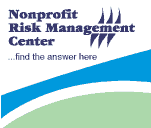|
May 23, 2007
Drafting a Memorandum of Understanding
An effective Memorandum of Understanding (MOU) prevents misunderstandings and disputes by clarifying the expectations of the partners. The process of developing an MOU is an instructive and potentially invaluable experience in partnering. You will learn how responsive your partner will be—are your calls returned promptly? Does your partner give the partnership the attention and seriousness it requires? You may also learn how your partner reacts when you disagree on an issue. In many cases, you will learn vital information such as:
- the corporate structure of your partner (don’t assume!);
- whether your partner has liability and other types of insurance;
- what specifically the partner is willing to promise (ambitious projections may dissipate as your partner commits to something realistic);
- what aspects of the project your partner is willing to be responsible for;
- how each organization will assess or evaluate the success of the project; and
- your partner‘s overall commitment to the project,
The refusal to put anything in writing is a red flag and may be sufficient reason not to proceed with the arrangement.
There are a number of elements that should be contained in a typical Memorandum of Understanding. Since each project and its partners are unique, the following suggestions are provided as an example. As with any contract, it is critical to obtain legal counsel before obligating your nonprofit.
- Overall Intent: Many MOUs begin with a brief description of the overall intent of the parties, such as
"Whereas the mission of We CARE is to provide hot meals to homeless persons living in the District of Columbia, and the mission of We DELIVER is to deliver food to homeless persons living in the District of Columbia, the organizations hereby agree to collaborate in developing an integrated food preparation and delivery system ‘beginning September 1, 2008."
The overall intent clause must accurately reflect what the parties are intending to do. Ulterior motives have no place in effective partnerships.
- The Parties: The next clause in an MOU describes the parties to the agreement. It should generally be specific to indicate the types of organizations (“a nonprofit corporation headquartered in the District of Columbia”).
- The Period: Specify a time period for the partnership with start and end dates.
- Assignments/Responsibilities: This important section of the MOU describes the duties and responsibilities of each partner. It is generally more effective to describe each organization’s responsibilities separately, beginning with the items that are an organization’s sole responsibility. List each group’s sole responsibilities, followed by a description of shared responsibilities, if any. In many cases, this section of the agreement will be the most detailed and lengthy. Clarifying responsibilities is the number one purpose of a written agreement.
- Disclaimers: Many MOUs will contain one or more disclaimers, including one indicating that employees of Organization A are not to be considered employees, borrowed or otherwise, of Organization B and vice versa. It may also be worthwhile to disclaim what the partnership is not intended to do, guarantee, or create.
- Financial Arrangements: A typical partnership will have financial implications. These should be spelled out in detail including which entity will pay for each item and when payment is due and to whom.
- Risk Sharing: Another critical element of an MOU is a description of who will bear the risk of a mishap. What if something goes wrong? What if the partnership’s activities result in injury, death or a financial loss? An important tenet of risk management is that an organization should never assume responsibility for something over which it does not have control. For example, a nonprofit renting a building to hold a dinner meeting should not assume responsibility for the damage caused by a leaky roof. A formal MOU may include an indemnification provision, promising that Organization A will pay for losses suffered by or caused by Organization B. ideally, indemnification provisions should be mutual in that each party will be responsible for its own negligent acts or omissions. Remember that an organization’s agreement to indemnify another nonprofit without the financial resources (including insurance) to meet this responsibility is a hollow promise. So make certain your partner is not only willing but also able to pay for losses it causes.
- Signatures: A representative from each partner with authority to bind their organizations contractually should sign the MOU. Each partner should retain a copy of the signed agreement.
Realize that a MOU is a contract and, as such, should be reviewed by your attorney before you sign the document to make certain that your nonprofit and its assets are protected and that you aren’t giving away the store in an effort to move forward with the partnership.
Source: No Strings Attached, Untangling the Risks of Fundraising & Collaborations, $10.00
 |



